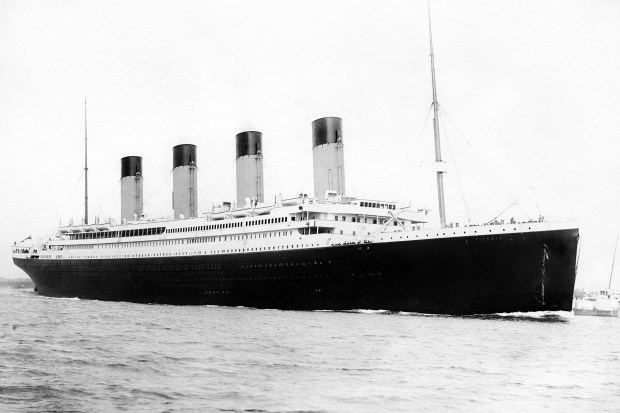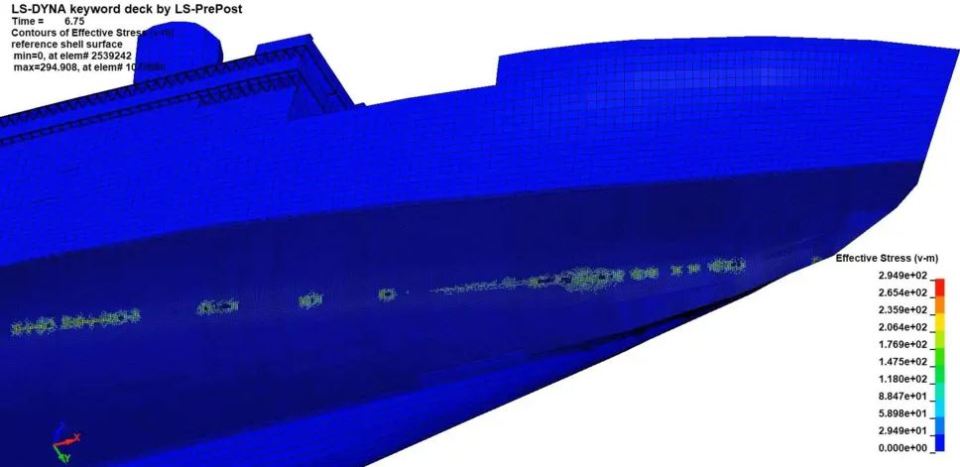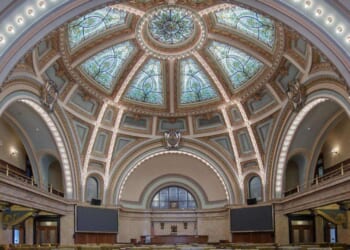A GROUNDBREAKING analysis of a digital scan of Titanic has revealed the “unsinkable” ship’s shocking final moments.
An ultra-detailed 3D replica of the doomed liner shows how it was violently ripped in two while sinking after unexpectedly hitting an iceberg.
The scan provides a new view of a boiler room on board the infamous Titanic.
And the new analysis confirms eye-witness accounts that engineers heroically worked right to the end to keep the ship lights on – consequently saving lives.
A computer simulation also suggested that mere A4-sized punctures in the liner’s hull led to its tragic sinking.
The historic wreck lies 3,800 metres below the icy Atlantic, and its structure was mapped using underwater robots.
Over 700,000 images taken from every angle were used to make a “digital twin” of the ship.
Since the colossal relic is so far underwater, exploring it with submersibles only provides tiny snapshots of the ship.
But with a scan, the first full view of the legendary ship has become accessible – and it has revealed the final tragic hours of the vessel.
On the floor of the deep sea, Titanic‘s front half, or its bow, lays upright.
But its stern is mangled up in a pile hundreds of miles away from the bow.
Titanic analyst Parks Stephenson stressed the importance of the detailed analysis: “Having a comprehensive view of the entirety of the wreck site is key to understanding what happened here.”
The scan’s new revelations include a porthole that was most likely smashed by the iceberg, lining up with eye-witness accounts that bits of ice actually went into some personal cabins during the iceberg collision.
One of Titanic’s huge boiler rooms – situated at the back of its bow – was investigated, and analyses of the boilers showed that some were concave.
This indicates that they were shockingly still operation as they plunged into the depths of the Atlantic.
This fact lines up with passenger accounts that the lights were still on as the ship sank.
Lying on the deck of the stern, another groundbreaking discovery was made.
A valve was discovered in an open position, indicating that steam was incredibly still flowing into the electricity generating system.
This could only have happened thanks to a team of engineers led by Joseph Bell.
They stayed behind to shovel coal into the ship’s furnaces to keep the lights on during the dramatic sinking.
Stephenson explained that although all of these engineers died in the process – their heroic actions saved many lives.
He said: “They kept the lights and the power working to the end, to give the crew time to launch the lifeboats safely with some light instead of in absolute darkness.
“They held the chaos at bay as long as possible, and all of that was kind of symbolised by this open steam valve just sitting there on the stern.”
Titanic timeline

By Harvey Geh
At 11:40pm, the Titanic strikes an iceberg on her starboard side, creating a series of punctures below the waterline that seal her fate despite being touted as “unsinkable.”
By midnight, Captain Edward Smith and his officers realise the ship cannot be saved, as water floods six compartments, far exceeding its capacity to stay afloat.
Around 12:15am, Titanic’s wireless operators send out frantic SOS signals, but the nearest ship, the Carpathia, is over 58 miles away and cannot arrive in time.
At 12:25am, lifeboats begin to be loaded, but confusion, class divisions, and a lack of drills lead to many leaving half-empty, with only enough boats for about half the passengers.
As flares are fired into the night sky around 12:45am, passengers cling to hope that nearby ships will respond, but none are close enough to help.
By 1:30am, the last lifeboats are launched, leaving over 1,500 desperate people stranded on the rapidly sinking ship with no means of escape.
Around 2:10 AM, the Titanic’s stern rises high into the air as the ship breaks apart, sending passengers tumbling into the freezing waters below.
At 2:20am, the Titanic disappears beneath the surface, leaving hundreds struggling in the icy ocean, where most succumb to hypothermia within minutes.
By 4:00am, the Carpathia arrives, rescuing 705 survivors from lifeboats, but the vast majority of passengers and crew – over 1,500 – have already perished in one of history’s greatest maritime disasters.
A new simulation has also given experts more insights into the sinking.
It showed that when the ship made a glancing blow against the iceberg, it actually left a series on mall punctures in a line along a narrow section of the hull.
Simon Benson, a naval expert at the University of Newcastle, said the difference between the ship sinking and not sinking was down to a few tiny holes.
Titanic was supposed to be unsinkable, designed to stay afloat even if four of its watertight compartments flooded – but the simulation calculated the iceberg’s damage was spread across six compartments.
Benson explained: “The difference between Titanic sinking and not sinking are down to the fine margins of holes about the size of a piece of paper.
He added: “But the problem is that those small holes are across a long length of the ship, so the flood water comes in slowly but surely into all of those holes, and then eventually the compartments are flooded over the top and the Titanic sinks.”
The human tragedy of the infamous disaster is still visible – with images showing personal possessions from passengers scattered across the seafloor.
It comes as a haunting letter written by a tragic teen aboard the doomed ship was revealed last month.














